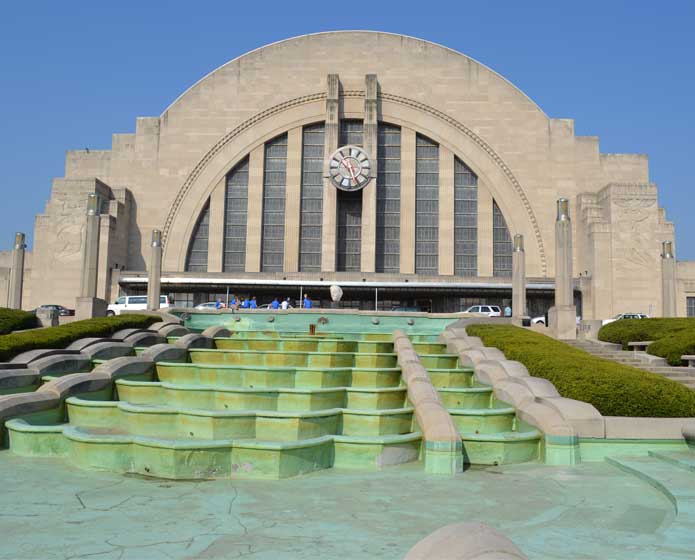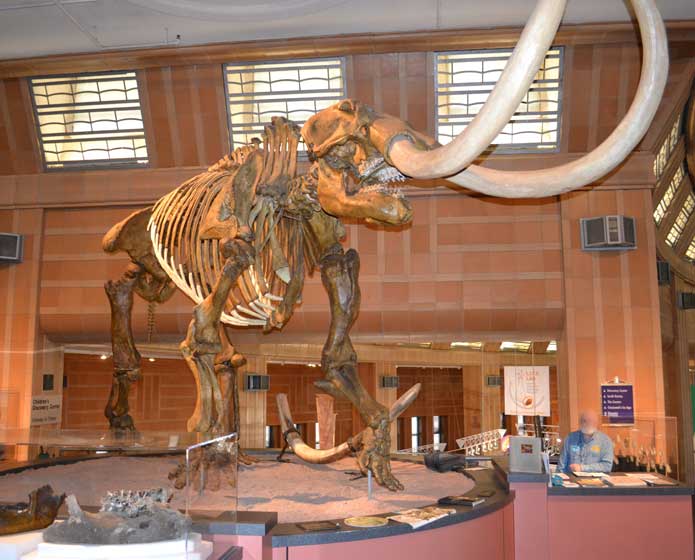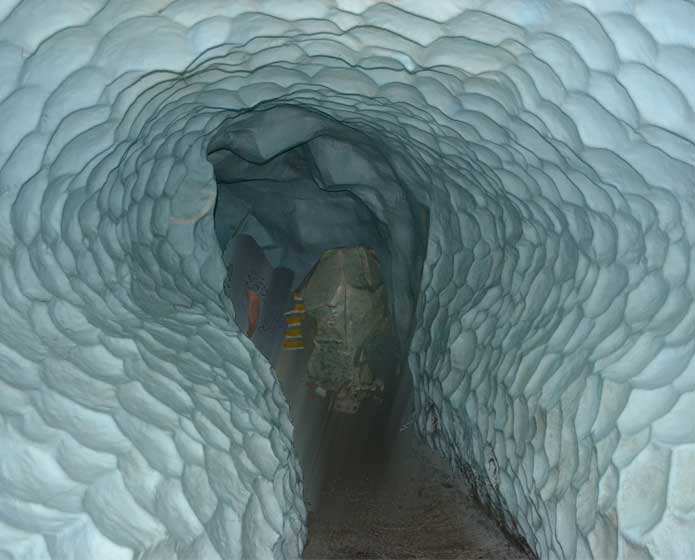Please select the social network you want to share this page with:
Cincinnati Museum of Natural History and Science - Cincinnati, Ohio
The Museum of Natural History & Science is located at the Cincinnati Museum Center, located at the historic Union Terminal train station. The Museum Center contains more than one museum. There is also the Duke Energy Children's Museum and the unique Cincinnati History Museum. The museum complex also houses a single screen Omnimax theater. The lower level is also used to showcase special exhibits. The Omnimax theater and any special exhibits require added fees to the normal admission, but an all-museum pass is available for a very reasonable price. At the time of this writing, a three museum pass was only $12.50 for adults and $8.50 for kids. The all-museum pass added only $4 to the price of a single museum ticket. Please verify the current museum admission prices before visiting.
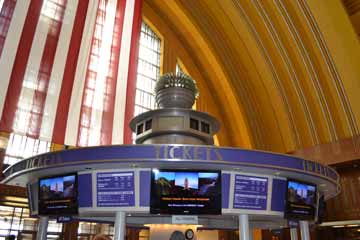
The restored Union Station is quite a place to visit itself. The Art Deco 1938 building was restored in the late 1980's through a city tax levy and private donations. Union Station's great hall is the perfect place to get photos and prepare your day for the museums ahead. The ticket center, a food court, ice cream parlor, and gift shop are located off the main hall.
Finding Science Materials at the Museum of Natural History & Science
Many of the exhibits in the museum focus on natural history, but there are many different science subjects to learn while visiting. The lower area has typical natural history dioramic displays, a small space areas, many different rocks and minerals, a large limestone cave, an ice age area, animals of the ice age, and a small dinosaur area. The lower area is the best part of the museum. The upper area has Nature's Trading Post, a science experiment area, some small natural history displays, and a walk through time showing how people lived over the last 200 years. This area includes some information on litter and recycling. The upper area is a little dated, but Nature's Trading Post and the science experiment area are excellent. The lower area is a little more up to date and is the best part of the museum if you only have limited time.
Cave Area
The limestone cave is probably the best man-made cave on display in a museum. Kids love to explore the small passageways, open caverns, and walk near an underground waterfall and stream. The cave helps to teach kids what cave life is like for animals such as bats and insects. Examples of limestone and gypsum stalactites and stalagmites are demonstrated so kids learn how some of the shapes inside the caves are formed. There are two paths available through the limestone cave, a handicap accessible path and a normal path that goes deeper and has steps. Outside the cave entrance is a bat habitat where there typically is an interesting bat demonstration once a day.
Nature's Trading Post
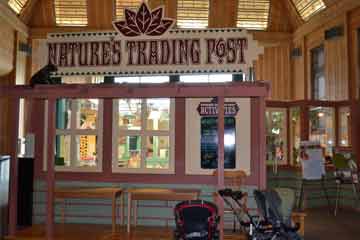
The most unique part of Cincinnati's Museum of Natural History & Science is Nature's Trading Post. The Trading Post is located down the ramp from the museum's entrance. The idea behind this exhibit is for guests to collect points they can trade for science-related prizes. The prizes include fossils, shells, shark's teeth, minerals, polished rocks, bones and skulls, and crystals. Points are earned by answering questions in the trading shop, taking a self-tour of the museum and answering questions along the way, or by bringing in items to trade. Items the museum will accept includes things like interesting rocks, leaves, seeds, fossils, bones, and other items from dead plants or animals. Kids should know the origin of the item they are trading. The items cannot be smelly or contain liquids that may rot.
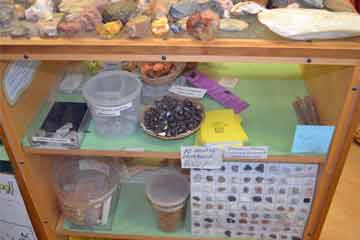
For kids who like to learn and who love games which earn prizes, Nature's Trading Post is a great way to spark kid's interest in science before visiting the museum. Have them go outside and find neat items to take on their trip for trading. Go to a park or forest and find fossils, pinecones, leaves, or interesting rocks. Have them write something about what they found. This is a great way to build up a trip to the museum and for them to learn something in the process. They can then trade for something they might not be able to easily find near their home, like shark's teeth, animal bones, dinosaur bone fragments, geodes, pyrite (fool's gold), or other cool minerals. According to one of the museum's volunteers, over 30,000 kids have came into the museum center and either earned points or traded items to earn science prizes.
MUSEUM OF NATURAL HISTORY & SCIENCE DETAILS
- Location: Cincinnati, OH
- Science Learned: physics, energy, biology, hydrology and environment
- Hours:
(check schedule before visiting - subject to change)
- M-Sat.: 9:00 am – 5:00 PM
- Sun. 11:00 - 6:00 PM
- Closed on many traditional holidays
- Cost: Subject to change
- Adults/teens (13 and older): $12.50
- Kids (3-12): $8.50
- Children 1-2: $4.50
- Children under 1: Free
- Parking $6.00
- Special exhibits and OmniMax additional admission required
- Memberships available for a reasonable cost
- URL: www.cincymuseum.org/sciencemuseum
Address: 1301 Western Avenue, Cincinnati, Ohio 45203
-
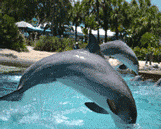
Sea World
-Aquarium/Theme Park-
Orlando FloridaSea World Orlando Florida
Orlando Sea World Sea World is a popular attraction in Orlando, Florida where guests can experience sea life up-close. -
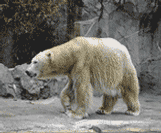
Cincinnati Zoo
- Zoo -
and Botanical GardenCincinnati Zoo and Botanical Garden
Cincinnati Zoo: Visit one of the oldest zoos in the Midwest U.S. The Cincinnati Zoo not only features a great selection of animals, but also a botanical garden spread thoughout the picturesque park. -
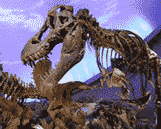
Top 10 Midwest U.S.
- Science Museum -
Science MuseumsBest Science Museums in the Midwest U.S.
Top 10 Midwest Science Museums See the best science museums to visit with kids in the Midwest United States. -
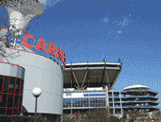
Carnegie Science Center
- Science Museum -
Pittsburgh, PAPittsburgh Carnegie Science Center
Carnegie Science Center: The Pittsburgh Carnegie Science Center has plenty of hands-on science activities designed for kids. This is also one of the best museums in the world to see and interact with robots. -
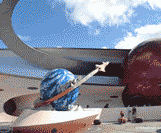
Learning Science at EPCOT
- Science Museum/Theme Park -Learning Science at EPCOT
EPCOT Science Learning Opportunities Find out some of the many features at EPCOT where guests can learn more about science in a fun way. -
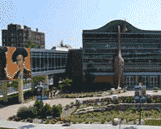
Childrens Museum
- Science Museum -
Indianapolis, INChildrens Museum Indianapolis
Indianapolis Childrens Museum: The Childrens Museum in Indianapolis is one of the best museums for kids to learn about science in the Midwest. Find out more about this museum. -
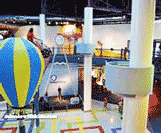
Imagination Staton
- Science Museum -
Toledo, OhioImagination Staton in Toledo Ohio
Toledo Ohio Science Museum Formally COSI of Toledo, the Imagination Station has many new exhibits and hands-on science activities at it great downtown location.
